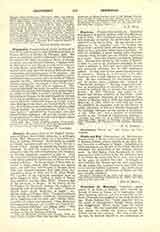

Chaumont, PIERRE-JOSEPH, Jesuit missionary in New York and Canada, b. near Chatillon-sur-Seine in France, 1611; d. at Quebec, February 21, 1693. His name is sometimes written Calmonotti or Calvonotti. He entered the Jesuit novitiate at Rome, at the age of twenty-one, and arrived at Quebec, August 1, 1639. In September he was already at work on the missions of Lake Huron, where Brebeuf was superior. He remained there until after the death of Brebeuf and his companions and the destruction of the missions. He was deputed to conduct 400 Hurons to Quebec, and he established them on a reservation on the Isle of Orleans opposite the city. After Le Moyne had arranged for a mission among the Onondagas of New York, Chaumonot and Dablon were sent to organize it. This mission lasted only two years; the priests and the fifty colonists who joined them subsequently being obliged to escape in the night to avoid a general massacre. Returning to Canada, he devoted himself for the rest of his life to his Huron converts. He established his famous Christian settlement, known as Lorette, which after shifting several times was located finally on the river St. Charles where it still exists, though it is called “Jeune Lorette” in contradistinction to the “Ancienne Lorette” established by Chaumont, who died before the last migration. He was the founder of the Congregation of the Holy Family which figures extensively in early Canadian history.
THOMAS J. CAMPBELL

